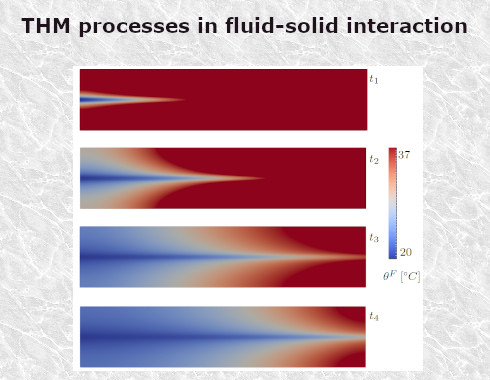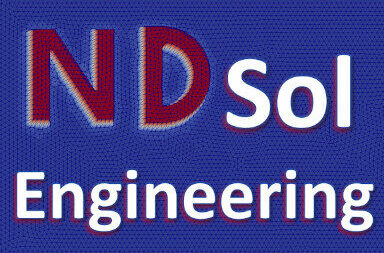Numerical modeling and simulation
Numerical solutions and modeling play a critical role in all areas of engineering, such as civil, mechanical, electrical, and chemical engineering, providing valuable insights into the behavior of complex systems and helping engineers make informed decisions.
Some of the key roles and benefits of numerical solutions are:
- Material and structure design optimization: Numerical models can be used to evaluate different design options and select the best solution that meets performance, safety, and cost criteria.
- Predictive analysis: Numerical simulations can be used to predict the behavior of systems under various conditions, allowing engineers to identify potential problems before construction begins.
- Virtual testing: Numerical models can be used to simulate physical tests, reducing the need for expensive and time-consuming physical testing.
- Risk assessment: Numerical models can be used to evaluate the impact of various risks, such as earthquakes, extreme weather conditions, and natural disasters, on structures and systems.
- Multidisciplinary collaboration: Numerical models provide a common platform for engineers from different disciplines to collaborate and solve complex problems.
Exemplary Tools



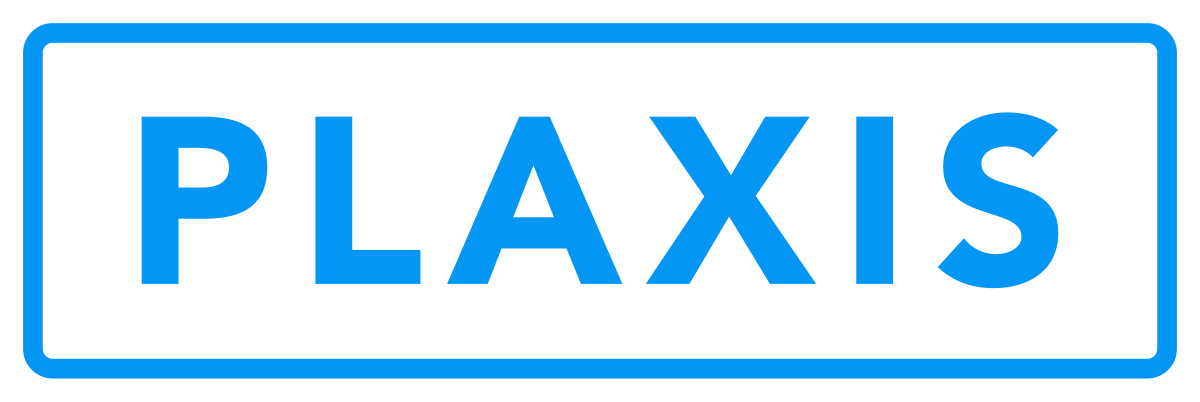

Exemplary Applications
Porous media dynamics
The dynamics of saturated/unsaturated porous media are related to many applications in civil and mechanical engineering: This includes applications in Geotechnical Engineering (soil dynamics, earthquake, and landslide analysis, and soil-structure interaction.), Environmental Engineering (fluid flow and contaminant transport), Construction Engineering (pavements and foundations under dynamic loadings), Energy Systems (energy storage systems under dynamic charging and discharging conditions), Manufacturing (as, e.g., dynamic response of metal foams, ceramics, and polymers), Acoustics (porous materials used in sound absorption and vibration damping). der Fertigungstechnik (z. B. dynamisches Verhalten von Metallschäumen, Keramiken und Polymeren) und der Akustik (poröse Materialien zur Schallabsorption und Schwingungsdämpfung).
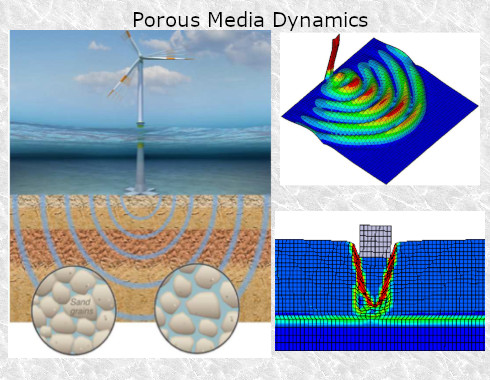
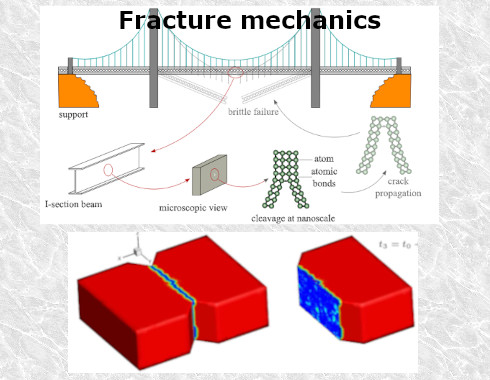
Fracture mechanics
The initiation and propagation of cracks under mechanical loading are of great importance in all fields of engineering, such as aerospace engineering, nuclear engineering, mechanical engineering, petroleum engineering, materials science, civil engineering, biomedical engineering, and geology. Some examples include the fracture of mechanical components; cracks in metals, ceramics, and polymers; the initiation and propagation of cracks in bridges, buildings, and pipelines; and the behavior of biological tissue and bone under stress.
Ref. (Open Access)
Thermal energy storage
Energy storage, as using phase-change materials (PCMs), is a technique that is essential for conserving the available and excess energy and improving its utilization. A well-designed energy storage system helps in reducing the gap between energy generation and consumption and assists in reducing pollutant emissions (e.g., CO2 ). Modeling of PCMs and optimization of energy storage system operation is a challenging task. In this, the phase-field method can be applied to capture the phase change process and realistically simulate the heat exchange between the PCM and the ambient. Modellierung von PCMs und Optimierung des Betriebs von Energiespeichersystemen ist eine anspruchsvolle Aufgabe. Dabei kann die Phasenfeldmethode angewendet werden, um den Phasenwechselprozess zu erfassen und den Wärmeaustausch zwischen dem PCM und der Umgebung realistisch zu simulieren.
Ref (Open Access)
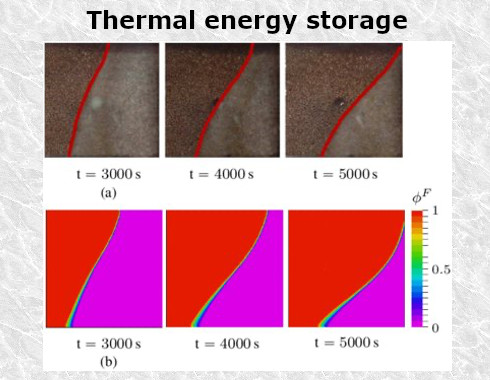

Hydraulic and drying-induced fracture modeling
Hydraulic fracturing is very important in different engineering applications. In geotechnical engineering, desiccation cracks in the foundation ground can endanger the stability of constructions. In enhanced geothermal systems (EGS) and petroleum engineering, it is crucial to be able to predict the paths of hydraulic fractures in order to be able to avoid possible contamination of groundwater.
Fracture modeling and validation focus not only on saturated but also on unsaturated porous media. Different models can be applied to model hydraulic fracturing such as the phase-field method.
Thermo-hydromechanical (THM) processes
THM processes, e.g., in porous and fractured materials, include heat transfer, fluid flow, mass transfer, and deformation. These are associated with many engineering applications. They include (1) Geothermal energyhot water is circulated through underground fractures and pores to extract the heat.
(2) Environmental remediation to remove contaminants from groundwater and soil. Hot water is injected into the subsurface and the heat is used to vaporize the contaminants, which are then collected and treated. (3) Carbon capture and storage: a technology to reduce greenhouse gas emissions by capturing carbon dioxide from industrial sources and injecting it into deep underground porous formations.
